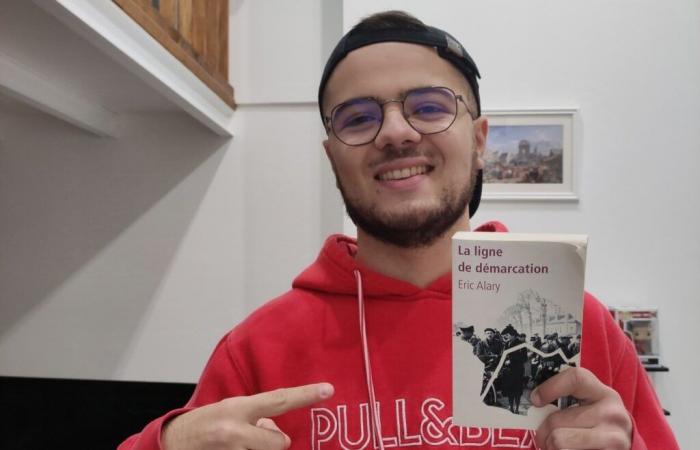Par
Valentine Gaxieu
Published on
Nov 11 2024 at 8:30 p.m
See my news
Follow Voix du Jura
As part of the completion of his end-of-studies thesis, Dolois Nathan Colombo Valette embarked on a long research project. Student at the University of Paris I Panthéon-Sorbonne in Master I in History of Contemporary Societies, the young man of 21 decided to look into the dividing line in the Jura.
As a reminder, the dividing line is, in France and during the World War IIthe limit between the so-called “occupied” zone by the German Army and in the area say “free” under the Vichy regime, under the conditions set by the armistice of June 22, 1940.
Native of a place fractured by the past
This subject “quickly arrived” in Nathan’s mind: “Since childhood, the World War II and in particular the dividing line fascinate me. When I was young, I couldn't tell myself that the country was split in twoeven if in reality it was cut into six. »
The department of Jura is all the more concerned, being at the time a “test” zone for Nazi Germany. “I lived for ten years in Broomswhich was at the time in a free zone. But I grew up and studied in Dole, which was not in an occupied zone during the war but in a 'forbidden' zone, and which had 10,000 Germans. There's a personal aspect of saying 'I'm coming of places fractured by the past'”, he expresses.
Turning away from resistance
Numerous works discuss the subject, including The dividing line d’Eric Alary. “But he did it on a national scale. He talks about the Jura as an example,” emphasizes Nathan. And added: “There are books which deal only with Jura. But they are generally focused on resistance et clandestine passages. »
“I want to turn away from this original prism which is clandestine passages and resistance. I want to produce a cultural history that would deal with the use and perception of this line. »
The student therefore wants to propose a “multi-scale and multidimensional analysis” of this border, both geographically, economically and socially, by questioning the impacts of this on the Jurassians.
A forgotten line
In his dissertation, supervised by his director Fabien Théofilakis, Nathan also wishes to integrate geo-historical perspectivesnotably elements of “ghost geography”. An approach that he describes as “sensitive”: “The dividing line remains completely obsolete from November 1942. It was destroyed the following year and very little remained in the Jurawhile there were the zones of Vichy, IIIe Reich and the zone forbidden to all French people,” he regrets.
In certain places in France, the demarcation line was materialized by posts or even barriers. But in the Jura, it was mostly natural elements – like the Doubs or La Loue – which were used as a border. He laments: “I therefore understand that there is not much material, but still… There is simply a commemorative plaque to Parcey on both sides of the bridge, a plaque for association between Loye and Parceyand a little something in Mont-sous-Vaudrey. There is a silence regarding this which is quite blatant. »
An archival geography
To study the subject, Nathan first looked at a collection of the archives which was made by the Departmental Archives of Jura, and in particular by the professor of history and geography Emmanuel Pauly. “I saw police reports and other reports, testimonies, or even letters from mayors or prefects », he presents.
The student will also have to create a bibliography, and thus go through lots of readingbooks or even articles. But above all he will carry out a archival geography. He details: “What archives will be useful to me about myself and how will they be useful to me? In France, where should I go to see? »
Provide a platform on this subject
Nathan's dream would be for his dissertation to result in a publication . He also wishes contribute to memoryof this dividing line: “That would be interesting to talk about it in schoolsto have a platform to discuss this subject which is, for me, crucial. »
After his Master's degree, Nathan wishes to try the aggregation for a doctorate, with the aim of being teacher-researcher at university.
Nathan needs you!
As part of his work, Nathan seeks to get in touch with Jura residents who may have known this line of demarcation, or members of their family. The student is looking for testimonies, objects from the period or any other information that can help him understand the representations and uses of this border imposed by the Third Reich. Nathan can be reached at: [email protected].
Follow all the news from your favorite cities and media by subscribing to Mon Actu.






